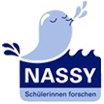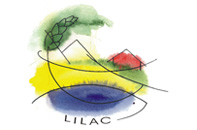The city as a changing hydrological system - steps towards an adaptive management of the urban water balance
SAMUWA is a joint research project within the BMBF funding measure "Intelligent and multifunctional infrastructure systems for sustainable water supply and wastewater disposal" (BMBF-INIS), in which the wfz is involved with the institutes ISWA, IWS and ILPÖ. The background of the project is the realisation that urban water infrastructure will be exposed to a change of boundary conditions in the future. Global trends such as climate change and demographic changes will be superimposed by city-specific boundary conditions such as the management of residential areas at risk of flooding. In urban drainage, such developments weigh particularly heavily because they currently encounter very inflexible systems. In the SAMUWA project, ways are being shown to lead the hitherto static approaches in the planning and operation of drainage systems to an adaptable dynamic management.
The state government of Baden-Württemberg is currently developing an adaptation strategy to the unavoidable consequences of climate change. To this end, the range of future climate development was first estimated using about 30 regional climate projections. Based on these "climatic guard rails", the vulnerability of the state to climate change was examined for various fields of action using vulnerability analyses. For this purpose, the wfz has prepared an expert report for the field of water management, on the basis of which action goals as well as adaptation measures and options can be derived.
This project investigates climate change impacts upon storm water overflow characteristics in combined sewer systems. Furthermore, measures to counter negative effects caused by climate are investigated. The core of the investigations are long-term pollution load simluations for several standardized representative sewer systems.
Development and Appliance of a Strategic Water Management Tool
The objective is to develop and to apply a sophisticated Water Management Tool (WMT) with a coupled emission/immission-based approach to monitor the water resources in the study region and to protect these water resources against land use pressure, especially through rubber cultivation. Both water quality and quantity aspects will be considered relating to the water bodies as important drinking and process water resources, and to the surface waters as natural habitats. The WMT could be a superior measure to restore and preserve the sustainability of water-related ecosystem services in rubber-dominated regions.
Within the project "Nassy", we want to give pupils an early understanding of work related to the field of water through experiments and events. We present exciting issues and explain them in greater detail. The events are focused towards pupils in classes 7-10.
Within the project Living Landscapes China (LILAC), the impact of land utilization on agricultural landscapes in the southwestern mountainous area of China shall be forecasted.
Miniturbinen in der Wasserversorgung
(Use of mini-turbines in water supply systems)
In Cooperation with Landeswasserversorgung, Bodenseewasserversorgung and EnBW, we start the project "Miniturbinen in der Wasserversorgung" to exploit the high efficiency of water power plants and use these systems in water supply systems. The mini-turbines are used at the handover points in water supply facilities. Their produced energy can be transferred into the existing energy supply grid.





